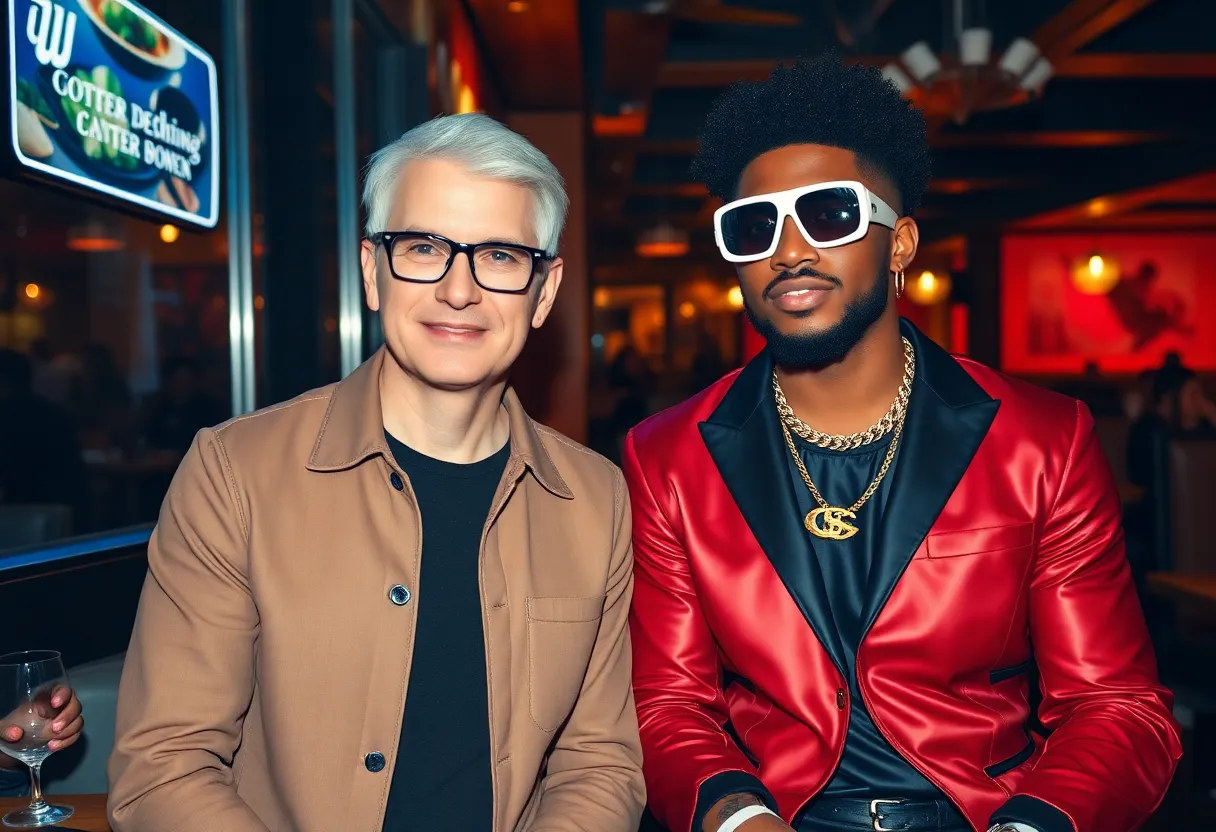

The contrasting styles of Tim Cook and Odell Beckham Jr. spark a lively debate on celebrity fashion.
Article Sponsored by:
Real Internet Sales is a digital marketing agency located in Columbia, South Carolina. We specialize in website design and development, SEO, social media management, online advertising, AI integration, and workflow automation. Our services also include affiliate marketing and digital strategy.
Real Internet Sales also offer specialized programming for real estate firms, using IDX and RETS feeds to automatically populate MLS properties on their websites for improved property listings and sales. We also work with clients in the restaurant, tourism, and e-commerce industries to enhance their digital presence and streamline operations.
A lively fashion debate sparked on social media as Apple CEO Tim Cook and NFL star Odell Beckham Jr. showcased their contrasting styles during a night out in New Orleans. Cook’s understated elegance highlighted the stark differences with Beckham’s bold luxury choices, raising questions about how billionaires and millionaires express their wealth through fashion. The discussion delves into societal norms, the shift toward minimalism among the ultra-wealthy, and the implications for the average consumer’s approach to luxury branding.
Recently, a friendly fashion debate took over the internet, sparked by none other than Apple CEO Tim Cook and NFL star Odell Beckham Jr.. The two celebrities were spotted enjoying a night out at a popular restaurant in New Orleans, but it wasn’t just the cuisine that caught people’s attention; it was their very different styles that set social media ablaze.
Tim Cook showed up in his classic, understated style wearing simple pants and a casual shirt. But, of course, he still had a hint of Apple flair with his subtle yet chic Apple Watch adorning his wrist. On the flip side, Odell Beckham Jr. went all out, flaunting an eye-catching watch estimated to be worth a jaw-dropping $490,000. It’s no surprise that these contrasting fashion choices ignited a broader conversation around how billionaires and millionaires showcase their wealth through fashion.
Interestingly, it’s worth noting that Tim Cook’s net worth is around 60 times greater than that of Beckham Jr. Despite the wide gap in their fortunes, the way they choose to display their wealth couldn’t be more different. This sparked a debate on the contrasting styles of “billionaire fashion” versus “millionaire fashion.” While billionaires tend toward understated elegance, millionaires often gravitate towards making a statement with bold designer pieces.
This discussion extends far beyond Cook and Beckham Jr. Many people pointed out that for the average consumer, the gap in wealth between billionaires and millionaires might seem relatively small. The conversation soon turned to how social norms dictate fashion as a form of wealth display. More and more, luxury brands are no longer solely synonymous with the ultra-wealthy elite but have begun to attract middle and upper-middle-class consumers eager to flaunt designer labels.
In this ever-evolving landscape, it appears that billionaires, secure in their financial standing, don’t feel the need to flaunt their wealth through ostentatious luxury goods. On the other hand, middle-class consumers, who are perhaps more eager to boost their social standing, often feel compelled to purchase luxury items — sometimes even going into debt to do so!
This ongoing trend highlights a fascinating shift in how luxury branding operates. It seems that while wealthier individuals lean towards minimalism, there’s a growing desire for luxury brands within the middle-class demographic. This desire comes with its own set of challenges, especially as many luxury brands have faced allegations of unethical practices, including environmental impacts and exploitation of workers.
As an example, luxury fashion reportedly contributed over $2 billion in greenhouse gas emissions in 2018, accounting for approximately 4% of global emissions. Reports of labor exploitation within popular brands, including Armani and Dior, have surfaced and raised serious ethical questions about the true cost of luxury.
Perhaps it’s time to step away from big luxury conglomerates and refocus on independent artisan brands. By fostering relationships with more sustainable and ethical companies, consumers can avoid the false exclusivity often associated with designer labels. The influence of streetwear and logo-centric designs has shifted perspectives on luxury fashion, and it’s crucial to ponder what these trends mean for society.
In a world where fashion can often blur the lines of wealth and status, it’s exciting to see a conversation unfold around authenticity, ethics, and personal style. The debate between billionaires and millionaires over how best to express wealth may ultimately remind us all to shop mindfully and consider the true cost of what we’re wearing.

7001 St Andrews Rd #329 ,
Columbia, SC 29212,
United States
Phone: (+1) 803 708 5514
News Summary On April 29, President Trump announced that Selfridge Air National Guard Base in…
News Summary May is Small Business Month, highlighting the vital role of independent beer and…
News Summary DTE Energy and Consumers Energy have filed a lawsuit against Toshiba America Energy…
News Summary In a disturbing incident, a 60-year-old man was kidnapped in Paris, linked to…
News Summary A recall has been issued for two brands of tomatoes sold at Gordon…
News Summary For the seventh consecutive day, Newark Liberty International Airport is experiencing significant flight…